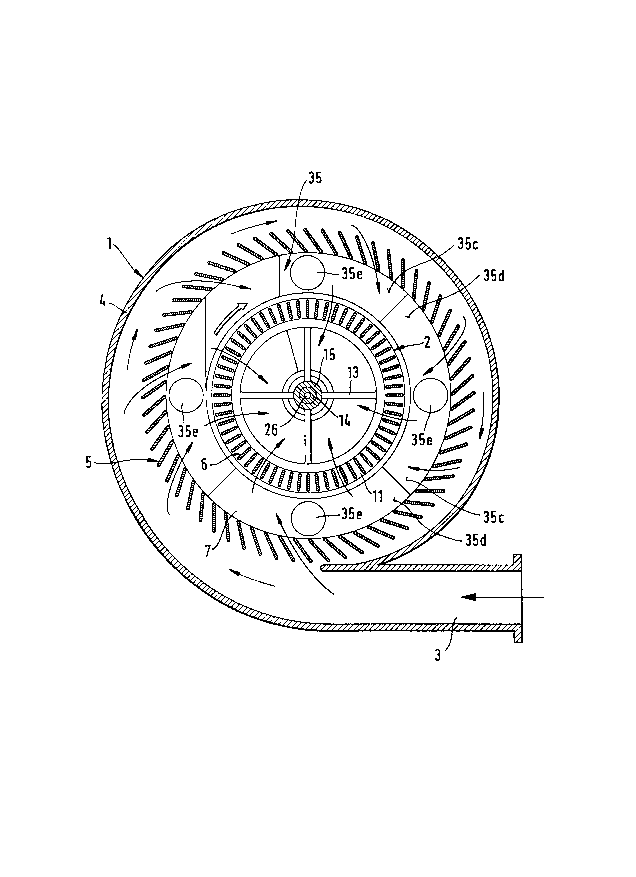Some of the information on this Web page has been provided by external sources. The Government of Canada is not responsible for the accuracy, reliability or currency of the information supplied by external sources. Users wishing to rely upon this information should consult directly with the source of the information. Content provided by external sources is not subject to official languages, privacy and accessibility requirements.
Any discrepancies in the text and image of the Claims and Abstract are due to differing posting times. Text of the Claims and Abstract are posted:
| (12) Patent: | (11) CA 2171890 |
|---|---|
| (54) English Title: | CENTRIFUGAL FORCE SEPARATOR |
| (54) French Title: | SEPARATEUR CENTRIFUGE |
| Status: | Term Expired - Post Grant Beyond Limit |
| (51) International Patent Classification (IPC): |
|
|---|---|
| (72) Inventors : |
|
| (73) Owners : |
|
| (71) Applicants : |
|
| (74) Agent: | SMART & BIGGAR LP |
| (74) Associate agent: | |
| (45) Issued: | 2001-09-18 |
| (22) Filed Date: | 1996-03-15 |
| (41) Open to Public Inspection: | 1996-09-29 |
| Examination requested: | 1998-06-29 |
| Availability of licence: | N/A |
| Dedicated to the Public: | N/A |
| (25) Language of filing: | English |
| Patent Cooperation Treaty (PCT): | No |
|---|
| (30) Application Priority Data: | ||||||
|---|---|---|---|---|---|---|
|
The invention relates to a centrifugal force separator whose rotor shaft protrudes at at least one of the two axial ends through a chamber for the discharge of the fines and the air. Particularly, the invention relates to the problem, in a centrifugal force separator with bilateral aspiration of fines and air, of reducing the distance between the bearings of the rotor shaft, while at the same time achieving an optimum between the requirement for unhampered outlet of the fines and the separating air, on the one hand, and, on the other hand, the requirement of a short distance between the bearings and, therefore, a short, light rotor shaft. According to the invention, each outlet chamber 17,18 provides an extension 19,20 or boss reaching inward axially, in which a bearing 21,22, for the rotor shaft is contained.
L'invention porte sur un séparateur à force centrifuge dont l'arbre du rotor dépasse d'au moins une des deux extrémités axiales à travers une chambre de décharge des particules fines et de l'air. En particulier, l'invention a trait au problème, dans un séparateur centrifuge avec aspiration bilatérale de particules fines et d'air, de réduire la distance entre les roulements de l'arbre du rotor, tout en obtenant un équilibre optimal entre l'exigence d'une sortie sans entrave des particules fines et de l'air de séparation d'une part et, d'autre part, l'exigence d'une distance courte entre les roulements et, par conséquent, un arbre de rotor court et léger. Selon l'invention, chaque chambre de sortie 17,18 fournit une extension 19, 20 ou un bossage s'étendant axialement vers l'intérieur, dans lequel un roulement 21, 22, pour l'arbre du rotor est contenu.
Note: Claims are shown in the official language in which they were submitted.
Note: Descriptions are shown in the official language in which they were submitted.

2024-08-01:As part of the Next Generation Patents (NGP) transition, the Canadian Patents Database (CPD) now contains a more detailed Event History, which replicates the Event Log of our new back-office solution.
Please note that "Inactive:" events refers to events no longer in use in our new back-office solution.
For a clearer understanding of the status of the application/patent presented on this page, the site Disclaimer , as well as the definitions for Patent , Event History , Maintenance Fee and Payment History should be consulted.
| Description | Date |
|---|---|
| Inactive: Expired (new Act pat) | 2016-03-15 |
| Inactive: IPC from MCD | 2006-03-12 |
| Inactive: IPC from MCD | 2006-03-12 |
| Inactive: IPC from MCD | 2006-03-12 |
| Grant by Issuance | 2001-09-18 |
| Inactive: Cover page published | 2001-09-17 |
| Amendment After Allowance Requirements Determined Compliant | 2001-07-05 |
| Letter Sent | 2001-07-05 |
| Inactive: Adhoc Request Documented | 2001-07-04 |
| Letter Sent | 2001-06-21 |
| Amendment After Allowance Requirements Determined Compliant | 2001-06-21 |
| Inactive: Final fee received | 2001-06-12 |
| Amendment After Allowance (AAA) Received | 2001-06-12 |
| Inactive: Amendment after Allowance Fee Processed | 2001-06-12 |
| Pre-grant | 2001-06-12 |
| Inactive: Amendment after Allowance Fee Processed | 2001-06-11 |
| Amendment After Allowance (AAA) Received | 2001-06-11 |
| Notice of Allowance is Issued | 2001-03-08 |
| Notice of Allowance is Issued | 2001-03-08 |
| Letter Sent | 2001-03-08 |
| Inactive: Approved for allowance (AFA) | 2001-02-22 |
| Amendment Received - Voluntary Amendment | 1999-02-09 |
| Letter Sent | 1998-07-22 |
| Inactive: Application prosecuted on TS as of Log entry date | 1998-07-21 |
| Inactive: Status info is complete as of Log entry date | 1998-07-21 |
| Request for Examination Requirements Determined Compliant | 1998-06-29 |
| All Requirements for Examination Determined Compliant | 1998-06-29 |
| Application Published (Open to Public Inspection) | 1996-09-29 |
There is no abandonment history.
The last payment was received on 2001-02-19
Note : If the full payment has not been received on or before the date indicated, a further fee may be required which may be one of the following
Please refer to the CIPO Patent Fees web page to see all current fee amounts.
Note: Records showing the ownership history in alphabetical order.
| Current Owners on Record |
|---|
| OMYA GMBH |
| Past Owners on Record |
|---|
| ULRICH BARTHELMESS |